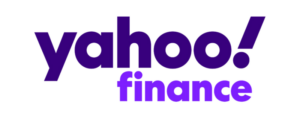
Featured In

Please note: This is not legal advice, merely educational material. If you would like legal advice for your specific situation, please reach out and we’ll connect you with an attorney experienced in working with universities.
With many universities facing the reality of a decline in enrollment and a loss of tuition dollars, it’s time to talk about how higher education institutions can mitigate risk, protect their endowments and move forward in this ever-changing landscape. In a study done by the Association of American Colleges and Universities in 2021, 60% of the higher education professionals surveyed indicated they were very concerned about the financial stability of their university. So what can university leadership do when faced with financial hardship to mitigate risk and decrease potential liability?
How can we determine our risk and liability?
When we talk about risk and liability in the context of universities facing financial hardship, we have to open up a conversation about how close the university is to the “zone of insolvency.” While there’s value in plucky optimism, when it comes to financial hardship, putting your head in the sand could actually be to your detriment. Many think of insolvency as falling from a cliff, or even standing on the edge of it. But many fail to recognize that standing a few feet away from the edge of the cliff is still considered within the “zone of insolvency.” There’s no exact definition for the “zone of insolvency”, but if there’s ongoing trouble paying bills, you’re dipping into the endowment excessively, or if a potential transaction could cause insolvency, you’re likely within the zone. Insolvency itself is when you owe more than you have in assets or if the university is unable to pay all bills on time.
Being in the zone of insolvency does not necessarily mean your university is at-risk of closing within that day, week, or even that year. The range is wider than you might suspect, and it’s crucial to know if you’re in it because the board of directors’ duties could legally change once an institution is within this zone (described below in the “what can be done” section). Not recognizing this change in duties can lead to increased risk, both for the university and the directors personally, as some board members have been held personally liable for failing in their legal duties as a director. This is one of the many reasons we suggest universities have an appropriately sized Directors & Officers (D&O) insurance policy.
Even unknowingly, a board of directors can put themselves and the university at greater risk for regulatory issues, financial penalties, lawsuits from creditors, and even closure by failing to act before it’s too late. So even if you don’t suspect your university is at-risk of closure, use the three objective tests below to determine if the duties of your board have shifted or not. This will determine the next best steps to manage risk and liability.
How can we determine if the university is within the zone of insolvency?
There are three tests commonly used to determine if an organization is within the zone of insolvency. If your organization tests as “within the zone” in any of the three tests, the university is officially within the zone of insolvency and it’s time to reach out to an attorney experienced in nonprofit insolvency. Note that while there are many bankruptcy attorneys out there, there are unique laws that come into play for nonprofits specifically in these situations, so be sure they have experience in that area of law.
The first test often used by courts is pretty straightforward: the balance sheet test. If the university’s assets are less than the liabilities, it’s in the zone of insolvency. One thing to note: the endowment does not count as an asset for the purposes of this particular test and loans do count as liabilities, though they can give the illusion of a balanced budget. Another test used in these situations is simply assessing the cash flow of the organization. Does the university have enough cash to pay its debts as they come due?
Those two tests are the most common tests used by courts to determine insolvency in nonprofits, but there is a third we’ve seen used before. A transactional analysis can help determine if the organization has entered into a transaction that leaves the university with “unreasonably small capital.” A large transaction can also put you into the zone of insolvency by essentially creating a larger risk of insolvency (you can read up on both of those tests further in an article from the American Bankruptcy Institute.)
There are several unique warning signs that the university might be approaching the zone of insolvency. Is the college failing to meet its budget multiple years in a row? Is revenue declining but costs are stagnant or growing? Watching the trends over time can be telling, but one of the biggest telltale signs is if you’re dipping into the endowment excessively.
Typically, universities will utilize 4-5% per year, which is a normal range, and some states have adopted a rule that essentially penalizes universities that utilize more than 7% of the total assets in the endowment in one year. With inflation on the rise, some colleges and universities are finding that the endowment is helping make up for the difference, but be cautious when using more than 7%. (Usage that counts towards this expenditure rate would also include “borrowing against” the endowment or similar.) If you have multiple consecutive years that exceed 7% usage annually, it’s likely time for some major changes, whether it be staffing cuts, a merger, or some sort of restructuring.
Remember: board member duties don’t change only at the time you enter bankruptcy/insolvency, they often change as you enter the zone of insolvency.
What can be done if the university is within or nearing the zone of insolvency? How does the duty of the board change?
First and foremost, get an attorney experienced in nonprofit insolvency, bankruptcy or receivership. With an experienced attorney involved, many universities facing financial crises are able to leave a better legacy and keep creditors at bay. If you get someone involved before it’s too late, they can often help preserve the endowment for future generations and lessen the personal liability of university leadership.
Once you know or suspect the college or university is in the zone of insolvency, the board of directors now has a duty to the organization’s creditors. Managing an array of creditors can be an intense and stressful process, but it must be done. The directors must also preserve the assets, as diverting assets or intentionally lessening the value of the assets while in the zone of insolvency can lead to directors being held personally liable. The heightened emotions and stress of a financial crisis and the management of the various creditors is another reason it is crucial to bring in the right attorney at the right time in the process. A seasoned nonprofit attorney can help navigate legal responsibilities while mitigating risk, protecting the endowment and keeping creditors at bay.
If your college or university is approaching or within the zone of insolvency, reach out to us for a free consultation with an experienced nonprofit attorney.
About Charitable Allies
Charitable Allies is a nonprofit law firm that exclusively serves nonprofit organizations because we believe all nonprofits should have access to great legal counsel that doesn’t cost a fortune. We’ve helped over 1500 nonprofit organizations nationwide since 2013. Whether you’re starting a nonprofit, reorganizing, or solving board conflict, our nonprofit lawyers will provide the guidance you need to get back to what matters most: your mission.
- Structuring Multi‑Site Churches and Expanding Ministries: Legal Essentials for Growth - November 26, 2025
- How to Launch a Grantmaking Foundation or Scholarship Fund (Without the Guesswork) - November 11, 2025
- Legal Advice for Nonprofits: When to Get Help and What’s at Stake - October 15, 2025

